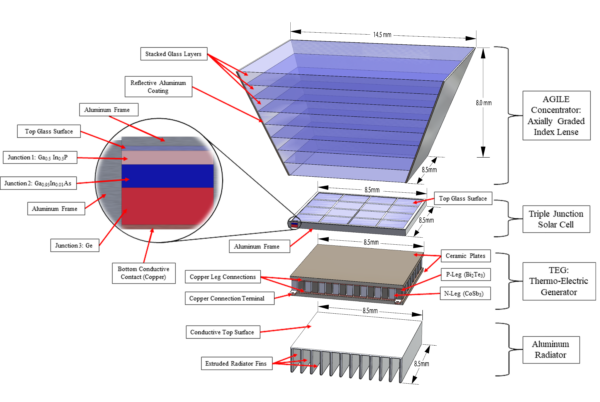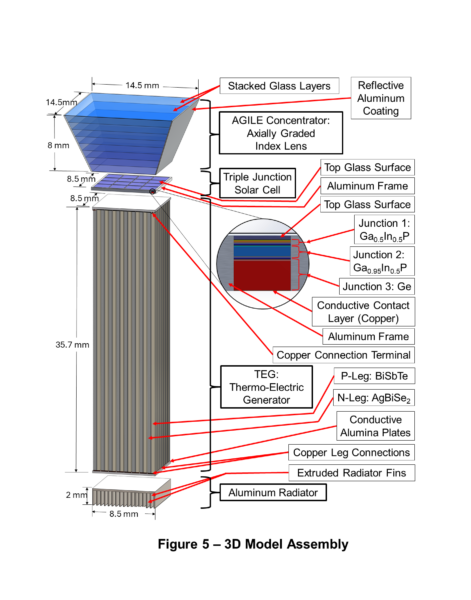Hypothesized Surface: Future Power Solutions for Exploring Hypothesized Surfaces – VCU – A
“Hybrid PV-TEG Power System for Asteroid Rover”
INSTITUTION
Virginia Commonwealth University (VCU)
CLASS
Tungsten Class (2023 – 2024)
STUDENT TEAM
Jonas Neihardt, Mechanical Engineering
ACADEMIC GUIDANCE
Professor Frank Gulla
PROJECT DESCRIPTION
This project’s goal was to develop a power source for a rover serving in a potential future mission to the asteroid Psyche, a celestial body of key interest due to its potential as a model of the Earth’s core. The project design innovates previous space energy technologies by merging photovoltaic modules enhanced by AGILE (Axially Graded Index Lens) lenses with thermoelectric generators. The AGILE lens increases energy capture of the solar panels by concentrating light from the sun onto the solar cells while the residual thermal energy is used by the thermoelectric generators to yield additional power. The system was designed to produce 75-125 Watts of power with a lithium-ion battery to allow the rover to operate briefly without sunlight. The solar cell performance was modeled both for monocrystalline silicon panels and triple junction GaAs panels using MATLAB Simulink and Crosslight APSYS respectively. An additional Simulink simulation was created to demonstrate real-time battery charging. A SolidWorks model was rendered to demonstrate the design layout. The design employs a layered setup, positioning the AGILE lens above the solar cell, with the TEG installed beneath. This configuration facilitates the collection of concentrated light energy by the solar cells, while simultaneously generating a temperature gradient that serves as the “hot” side of the TEG. Finally, a heat sink is incorporated beneath the TEG to enhance surface area for radiative heat transfer, thereby boosting overall performance. This model was used to simulate the thermoelectric generator’s performance using SolidWorks’ Thermal Analysis.

Initial 3D model image.

Final 3D model image.

